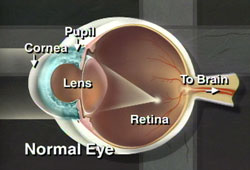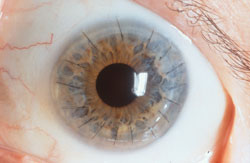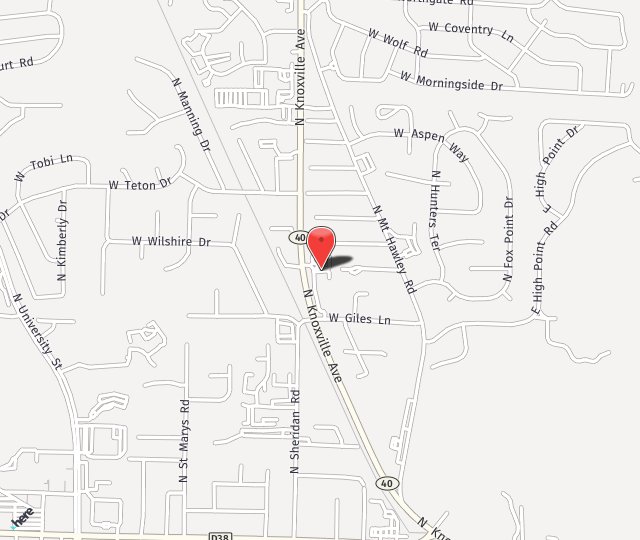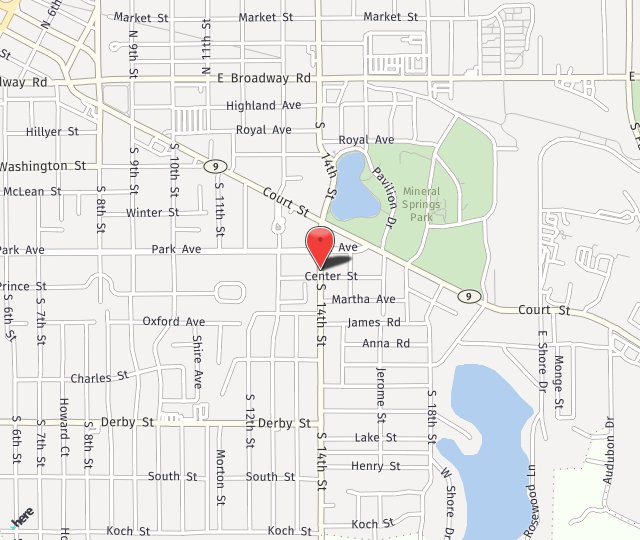If the cornea becomes cloudy as a result of corneal disease, the only way to restore sight is to replace or transplant the cornea. Corneal transplantation (keratoplasty) is the most successful of all tissue transplants. An estimated 20,000 corneal transplants are performed each year in the United States.


Corneal tissue for transplant comes from an eye bank. Due to advances in Eye Banking technology, donor tissue is usually readily available when a patient requires a transplant. The cornea is tested thoroughly to make sure it is safe for transplantation. Sutures hold the transplanted cornea in place during healing process.
Corneal transplant is for those who:
- have lost vision due to corneal disease
What to expect on surgery day:
You will arrive at the Hospital 30-60 minutes prior to your procedure. Once you have been checked in you may be offered a sedative to help you relax. You will then be prepared for surgery. The area around your eyes will be cleaned and a sterile drape may be applied around your eye. Your eye will be numbed with topical or local anesthetics. When your eye is completely numb, an eyelid holder will be placed between your eyelids to keep you from blinking during the procedure.
Your diseased cornea will be removed with a special round tool called a trephine. Then the donor cornea will be cut to a matching size, placed upon your eye and secured in place with very fine sutures. Your eye will be patched or shielded after surgery.
The surgery itself is painless and usually done on an outpatient basis. The operating time is approximately 60-90 minutes, followed by a short recovery time. You will be allowed to go home soon afterward. You should relax for the rest of the day. You may experience some discomfort for a few days. Eye drops and pain medication can be used to minimize this discomfort.
Everyone heals differently, but most patients resume activities within a few days. Strenuous activity such as lifting, bending or straining should be avoided for several weeks. To protect your eyes from inadvertent trauma, you will be advised to wear shields, glasses, or sunglasses while your eye heals.
The healing process can take many months. Often, the stitches are not removed until six to nine months after surgery. During that time, medicated eye drops will be used to make sure the transplant heals properly.
Realistic Expectations:
Return of best vision after corneal transplant surgery may be recognized in three or four months for some, while it may take up to a year after the operation for others. As in any kind of transplant, rejection of the donated tissue can occur. The major signs of rejection are redness of the eye or worsening of vision. Rejection of a donor cornea is rare, but it is very important to contact your eye doctor immediately if the signs of rejection occur.
The success rate for corneal transplants depends on the cause of the clouding. For example, corneal transplants for degeneration following cataract surgery, and those for keratoconus both have high success rates, while corneal transplants for chemical burns have lower success rates.
If you decide that a corneal transplant is an option for you, you will be given additional information that will allow you to make an informed decision about whether to proceed. Be sure you have all your questions answered to your satisfaction.
If you would like more information about this procedure you can make an appointment or contact the office for additional information.


